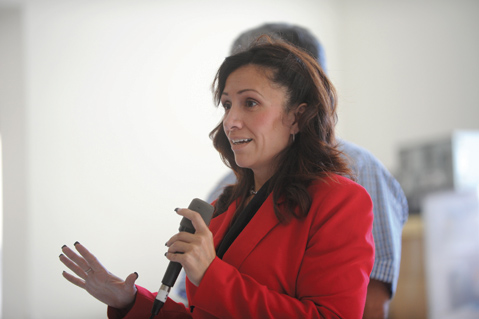Lawsuit Looms over Santa Barbara City Council Vacancy
District 3 Activists Want a Special Election, Not an Appointment

The Santa Barbara City Council is navigating uncharted and legally treacherous waters as it decides how to fill the vacancy that will be left by councilmember and mayor-elect Cathy Murillo ― who represents District 3, the city’s Westside ― when she ascends to the mayor’s seat next Tuesday, January 9.
Murillo has two years left on her four-year term, and there is now considerable debate whether the council should appoint her replacement or allow the Westside to hold a special election. The council voted on December 5 to begin the appointment process, but activists Jacqueline Inda and Sebastian Aldana ― two plaintiffs in the lawsuit that moved Santa Barbara from at-large to district elections ― have threatened to sue the city if it doesn’t change course. They’ve argued an appointment would strip the heavily Latino, working class Westside neighborhood of its ability to choose Murillo’s successor and run counter to the spirit and purpose of district elections.
Retired judge and attorney Frank Ochoa is negotiating with City Hall on the pair’s behalf. On December 26, he sent a letter to City Attorney Ariel Calonne outlining the legal justifications for holding a special election on June 5 in conjunction with the statewide primary. “To ensure that the impending vacancy is filled in a manner which does not impair the ability of a protected class to elect a candidate of its choice, the City Council must provided for a special election,” Ochoa wrote. “District 3 is the largest majority-minority district in the City of Santa Barbara and its residents would not be allowed to elect a replacement to their soon-to-be open seat if Council’s December 5 action is followed by the new council.”
Ochoa cited the 2015 district election case settlement agreement and acknowledged it does not address vacancies. “We’re kind of in a tough place,” agreed Inda. But Ochoa also said the section of the city charter that dictates how vacancies are filled by appointment in an at-large system ― now outdated with the new district system ― no longer applies. “It’s really like trying to fit a round peg into a square hole,” he said, insisting that the city charter needs to be updated. Calonne stated during a previous council hearing that he believes the current charter language does, in fact, apply to the upcoming vacancy, and that the city is safe from litigation.
This week, councilmember-elect Kristen Sneddon said, “I’m inclined toward a special election, but am looking forward to meeting with the new council to discuss with new information on actual cost and timing.” Eric Friedman, who will also be sworn in January 9, was similarly open to discussion: “I am interested to review information from the City Attorney in regards to the new issues raised, in particular whether a special election could be consolidated with the June Primary,” he said. “My top priority is to ensure the residents of District 3 are fully represented.”
Ochoa also explained in his letter that a June 5 special election would cost around $30,000, not $300,000, the price tag city staff estimated for stand-alone balloting in April. The council cited the $300,000 figure in its deliberations and subsequent vote to move forward with an appointment. Murillo was the only council member to vote against an appointment, stating District 3 should elect its new representative.
In 2009, under the city’s former at-large system, current councilmember Randy Rowse was appointed to fill Das Williams’s seat after Williams was elected to the California State Assembly. Rowse was then elected at-large in 2011, then re-elected in 2015 to represent District 2. This year, the council could conceivably make an appointment in District 3 ― to avoid having only six members for six months ― then also hold an election in June.
Wednesday evening at a town hall-style gathering inside a taekwondo studio on San Andres Street, Ochoa and Inda encouraged Westside residents to pack the City Hall chambers this coming Tuesday and voice their support for an election. The new council needs to see that the neighborhood feels strongly about the issue, they said.
Ochoa stressed the advantage of incumbency, using his own career on the bench as an example ― Governor Jerry Brown appointed him when he was only 32 years old (he was the youngest judge in the state at the time), and Ochoa went on to serve six consecutive elected terms. If someone is appointed by the council, he explained, they will hold a huge advantage over any challenges during the next district election.
“Who is going to have the power to create incumbency on the Westside, the community or the City Council?” Ochoa asked the crowd of two dozen residents. “What’s going to make the difference is the number of Westside residents there on [January 9],” Ochoa said. “The other option is litigation,” said Inda.


